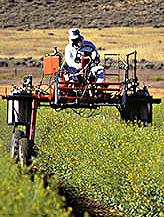Pike County Pennsylvania – Private Septic Systems Need Maintenance???
On September 19, 2019, the Pike County Conservation District hosted a 2-hour informational work and training session. The topic – Properly Maintaining Your On-Lot Septic System
To help Pike County residents keep local lakes and ponds clean, the Pike County Conservation District is hosting a free three-part workshop series titled “How your Backyard Activities Affect your Lake.”This is the third workshop in the series. It will be held at the Dingman Township Fire Hall, 680 Log Tavern Road. Presenter Brian Oram, a Professional Geologist with Water Research Center and B.F. Environmental Consultants Inc., will discuss the basic functionality of an on-lot system and best practices to help prevent water pollution.
During the session – Mr. Brian Oram promised to post a few items:
- Here is a color copy of the presentation septicsystemspresentation92019. Please note copyright terms and conditions.
- Here is a copy of a document the presenter found available on the local agency website on septic systems.
- The Keystone Clean Water Team on-line store, get a copy of our educational booklet, order a neighborhood hazard report, mail order water testing program, at-home water screening and more.
Other Training On Septic Systems (ONLINE)
1. EPA Onsite Wastewater Treatment: Systems Management
2. EPA Onsite Wastewater Treatment: Processes and Systems
Books
Wells and Septic Systems Paperback
The Septic System Owner’s Manual Paperback
Harvest the Rain, How to Enrich Your Life by seeing Every Storm as a Resource
Test Assured Science Fair Water Testing Kits
Science Fair / School Project Test Kit
If you’re looking for a science fair project, TestAssured’s 4 Test Kit Set is perfect for students. This set includes 4 test kits and is appropriate for children in grades three through nine. The easy to use tests encourage students to learn about water quality while testing various samples against each other. The tests allow them to analyze and compare the differences among a number of water sources, including bottled, well, rain, puddle, and lake water.
This comprehensive test set provides quick results delivered on the spot. Using the test kits, students can accurately determine contamination levels in their test samples. Test 4 different samples of water and compare the results from each. The set comes with a detailed instruction guide and results notebook to track and compare test results.
The School 4-Pack Kit Set includes 4 kits that contain tests for:
- Chlorine (Cl)
- Copper (Cu)
- Nitrates
- Nitrites
- Alkalinity
- pH
- Hardness
- Iron (Fe)
This is the perfect water experiment kit for classrooms and students of all ages from elementary to middle and high school students. The test strips can be used to compare the results of a variety of liquids besides water, such as sodas, juices, and other beverages. Easily compare results of different waters and liquids without buying multiple kits. This 4-pack testing kit for schools and science fairs gives you a total of 32 tests in just one convenient kit.
We would also suggest you reviewing the following:
1. Water Quality Index (WQI) Calculator – Surface Water Quality Data
2. Watershed Monitoring Website
Pesticides, Fertilizers Linked to U.S. Premature Births
http://earthhopenetwork.net/Pesticides_Fertilizers_Linked_US_Premature_Births.htm
Pesticides, Fertilizers Linked to U.S. Premature Births
ENS May 7, 2007
INDIANAPOLIS, Indiana
The rising premature birth rate in the United States is associated with increased use of pesticides and fertilizers containing nitrates, according to research by a professor of clinical pediatrics at the Indiana University School of Medicine.Paul Winchester, MD, reports his findings today at the Pediatric Academic Societies’ annual meeting in Toronto, Canada, a combined gathering of the American Pediatric Society, the Society for Pediatric Research, the Ambulatory Pediatric Association, and the American Academy of Pediatrics. “A growing body of evidence suggests that the consequence of prenatal exposure to pesticides and nitrates as well as to other environmental contaminants is detrimental to many outcomes of pregnancy. As a neonatologist, I am seeing a growing number of birth defects, and preterm births, and I think we need to face up to environmental causes,” said Dr. Winchester.
 Dr. Paul Winchester is a professor of clinical pediatrics at the Indiana University School of Medicine and medical director of Newborn Intensive Care Services at St. Francis Hospital, a community hospital in Indianapolis.
Dr. Paul Winchester is a professor of clinical pediatrics at the Indiana University School of Medicine and medical director of Newborn Intensive Care Services at St. Francis Hospital, a community hospital in Indianapolis.
A premature baby is born before the 37th week of pregnancy. Premature birth occurs in between eight to 10 percent of all pregnancies in the United States.The rate of premature birth in the United States has risen about 30 percent between 1981, when the government began tracking premature births, and 2005, according to the National Center for Health Statistics, a division of the Centers for Disease Control and Prevention.
The prematurity rate was 9.4 in 1981; it has increased every year since then except for slight dips in 1992 and 2000.
Winchester and his colleagues found that preterm birth rates peaked when pesticides and nitrates measurements in surface water were highest, from April through July, and were lowest when nitrates and pesticides were lowest, in August and September. More than 27 million U.S. live births were studied from 1996-2002. Preterm birth varied from a high of 12.03 percent in June to a low of 10.44 percent in September.
The highest rate of prematurity, 11.91 percent, occurred in May and June and the lowest, 10.79 percent in August and September. These results were independent of maternal age, race, education, marital status, alcohol or cigarette use, or whether the mother was an urban, suburban or rural resident.
Pesticide and nitrate levels in surface water were also highest in May-June and lowest in August and September, according to the U.S. Geological Survey.
“Preterm births in the United States vary month to month in a recurrent and seasonal manner. Pesticides and nitrates similarly vary seasonally in surface water throughout the U.S. Nitrates and pesticides can disrupt endocrine hormones and nitric oxide pathways in the developing fetus,” Winchester said.
Prema ture baby in an incubator, a controlled safe environment where it can grow until it is functioning independently.
ture baby in an incubator, a controlled safe environment where it can grow until it is functioning independently.
Because they are born too early, premature babies weigh much less than full-term babies. They may have health problems because their organs did not have enough time to develop and need special medical care in a neonatal intensive care unit, where they stay until their organ systems can work on their own.”I believe this work may lay the foundation for some of the most important basic and clinical research, and public health initiatives of our time,” said James Lemons, MD, professor of pediatrics at the IU School of Medicine.
Dr. Lemons is director of the section of neonatal-perinatal medicine at the IU School of Medicine and heads the Riley Hospital for Children of Clarian Health’s section of neonatal-perinatal medicine. “To recognize that what we put into our environment has potential pandemic effects on pregnancy outcome and possibly on child development is a momentous observation, which hopefully will help transform the way humanity cares for its world,” Lemons said. In young infants, ingestion of nitrates, components of fertilizers that are often washed into surface water and groundwater, can reduce the blood’s ability to carry oxygen.
[amazon_link asins=’1514238101′ template=’ProductCarousel’ store=’webdespro-20′ marketplace=’US’ link_id=’224aa70d-d4a5-11e8-85cc-1393b8c39d8f’]
 Today it is possible to minimize fertilizer applications. Mounted on a high-clearance sprayer, this crop canopy sensors monitor plant greenness, which is translated into a signal by an onboard computer that controls the application rate of nitrogen fertilizer to the soil.
Today it is possible to minimize fertilizer applications. Mounted on a high-clearance sprayer, this crop canopy sensors monitor plant greenness, which is translated into a signal by an onboard computer that controls the application rate of nitrogen fertilizer to the soil.
The association between nitrate-contaminated well water and inability of the blood to carry oxygen was first described by Hunter Comly, an Iowa City physician during the early 1940s. In 1974, the Safe Drinking Water Act set a maximum contaminant concentration for nitrates of 10-milligram per liter for public water supplies, but it does not apply to private wells. In a 1994 survey of 5,500 private water supplies in nine Midwestern states, 13 percent of the wells were found to have nitrate concentrations greater than the standard. The state of Wisconsin is well aware of the problems nitrates in drinking water can cause for premature babies, especially in rural areas. In 2006, the state Department of Natural Resources, DNR, issued a warning that nitrates that are washed into groundwater from fertilizer can be dangerous to infants, and especially to premature infants. “All infants less than six months of age are at risk of nitrate toxicity, but premature babies and babies with other health problems are more sensitive than healthy infants,” the DNR said.
Well owners are advised that the only way to know if their drinking water contains nitrate is to have a water sample tested by a certified laboratory. Testing is recommended for well water used by pregnant women and is “essential for a well that serves infants under six months of age,” the DNR says. The state of Indiana Department of Natural Resources does not address this issue.
 At the Yakima Agricultural Research Laboratory in Wapato, Washington, a technician applies a test pesticide to a rapeseed variety being grown for canola oil production.
At the Yakima Agricultural Research Laboratory in Wapato, Washington, a technician applies a test pesticide to a rapeseed variety being grown for canola oil production.
For the past four years, Winchester and colleagues have focused attention on the outcomes of pregnancy in Indiana and the United States in relation to environmental pesticides and nitrates in surface and drinking water. Last year at the Pediatric Academic Societies’ annual meeting, Dr. Winchester reported that birth defects peak in Indiana and in the United States as a whole during April through July, the same months as pesticides and nitrates reach their maximum concentrations in surface water. This year’s presentation expands upon that work. Collaborating with Dr. Winchester on this study were Akosua Boadiwaa Adu-Boahene and Sarah Kosten of the IU School of Medicine, Alex Williamson of the U.S. Geological Survey, and Ying Jun, PhD of the University of Cincinnati. The work was funded by the Division of Neonatology, Department of Pediatrics of the IU School of Medicine.
Glyphosate Testing – RoundUp in Drinking Water
Get Your Drinking Water Tested – Well Water / City Water
